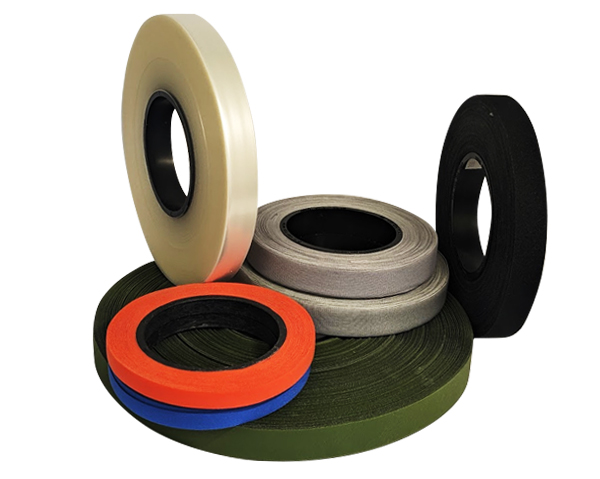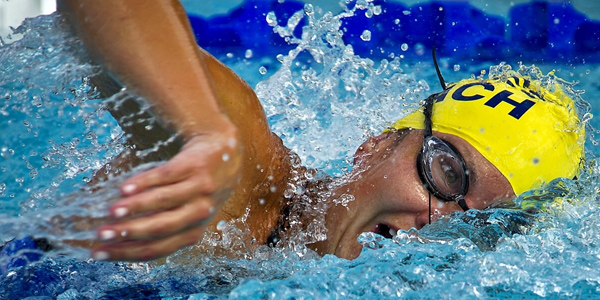How to Use Seam Tape on Waterproof Fabrics: Quick Guide
Waterproof fabrics are essential in industries where durability and protection against the elements are paramount. Whether for outdoor gear, protective clothing, or industrial applications, ensuring seams remain watertight is crucial. Seam tape plays a key role in reinforcing these materials, preventing leaks, and extending the lifespan of the fabric.
At Ardmel Automation, we understand the importance of precision and reliability in waterproofing solutions. Seam sealing is not just about applying tape, it’s about ensuring long-term performance in demanding environments. This guide explores the best practices for applying seam tape effectively to maintain the integrity of waterproof fabrics.

What Is Seam Tape?
Seam tape is a specialised adhesive material designed to seal stitched seams in waterproof fabrics. Stitching creates tiny holes that can allow moisture to penetrate, compromising the fabric’s effectiveness. Seam tape acts as a barrier, ensuring complete waterproof protection while maintaining flexibility and durability.
There are two primary types of seam tape:
- Heat-activated seam tape: Requires controlled heat and pressure to bond with the fabric, offering a long-lasting seal.
- Self-adhesive seam tape: A peel-and-stick solution for quick applications, though often less durable than heat-bonded options.
Choosing the right type of seam tape is essential for ensuring performance under varying conditions.
Choosing the Right Seam Tape for Your Fabric
Not all waterproof fabrics are the same, and selecting the appropriate seam tape ensures a secure and lasting bond.
- Lightweight fabrics (e.g., nylon, polyester) require flexible, thin seam tape to maintain pliability.
- Heavy-duty fabrics (e.g., Gore-Tex, industrial-grade textiles) need robust tape capable of withstanding extreme conditions.
- Specialised coatings (e.g., polyurethane, PVC) demand seam tape designed specifically for chemically treated surfaces.
Using the wrong seam tape can lead to adhesion failure, reducing the fabric’s waterproofing effectiveness.

Preparing the Fabric for Seam Taping
For optimal adhesion, proper preparation is essential:
- Clean the fabric thoroughly. Dirt, oil, or moisture can weaken the bond. Use isopropyl alcohol or a mild detergent to remove contaminants.
- Dry the fabric completely. Even slight dampness can prevent the tape from sticking.
- Lay the fabric on a flat, heat-resistant surface. This prevents wrinkling and ensures even application.
- Identify problem areas. Focus on high-stress seams or sections prone to water ingress.
- Skipping these steps can lead to peeling, bubbling, or premature failure of the seam tape.
Applying Heat-Activated Seam Tape
Heat-activated seam tape provides a strong, durable bond but requires careful handling. Follow these steps:
- Position the tape over the seam with the adhesive side facing the fabric.
- Use a heat source (iron, heat press, or seam-sealing machine) at the manufacturer-recommended temperature.
- Apply even pressure with a seam roller or pressing tool to ensure a secure bond.
- Allow time to cool before handling the fabric.
Too much heat can damage delicate fabrics, while too little heat may prevent proper adhesion.
Applying Self-Adhesive Seam Tape
Self-adhesive tape is easier to apply but still requires precision:
- Peel off the backing and carefully place the tape along the seam.
- Press firmly using a roller or smooth tool to eliminate air bubbles.
- Ensure complete adhesion by pressing along the edges.
- Let it cure for a few hours before exposing it to moisture.
While self-adhesive tape is convenient, it may not be as long-lasting as heat-activated options.

Curing and Testing the Waterproof Seal
After applying seam tape, always test its effectiveness:
- Let the tape set according to manufacturer guidelines.
- Conduct a water test by spraying or submerging the fabric slightly.
- Inspect for leaks and reapply tape if necessary.
If water seeps through, the tape may need additional pressure or heat.
Maintaining and Repairing Seam-Taped Fabrics
Seam tape doesn’t last forever. To extend its lifespan:
- Avoid excessive folding and creasing that may weaken adhesion.
- Store waterproof gear properly in a cool, dry place.
- Reapply seam tape if it begins to peel or show wear.
For high-performance gear, periodic seam maintenance ensures continued protection against the elements.
How Long Does a Seam Tape Last?
The lifespan of seam tape depends on multiple factors, including fabric type, environmental exposure, and application method. Generally:
- Heat-activated seam tape lasts 5–10 years with proper application and maintenance.
- Self-adhesive seam tape has a shorter lifespan, typically 2–5 years, due to reduced bonding strength.
- High-performance seam tapes used in industrial applications can last over a decade with regular inspections and upkeep.
Regular testing and maintenance ensure the longevity of the waterproof seal.

Common Mistakes and How to Avoid Them
- Applying tape to damp fabric: Weakens adhesion.
- Overheating the tape: Can damage the fabric and cause peeling.
- Ignoring fabric compatibility: Leads to poor bonding and ineffective waterproofing.
Taking time to follow correct application techniques prevents premature failure.
Wrapping Up…
Seam tape is a vital component in ensuring waterproof fabrics remain effective across a wide range of applications. Whether for industrial workwear, protective clothing, or outdoor gear, using the right seam tape and applying it correctly ensures long-term durability.
At Ardmel Automation, we specialise in advanced seam sealing technology, offering precision-engineered solutions for waterproof fabrics. If you’re looking for reliable seam sealing equipment or expert advice, contact our team today to learn more.
